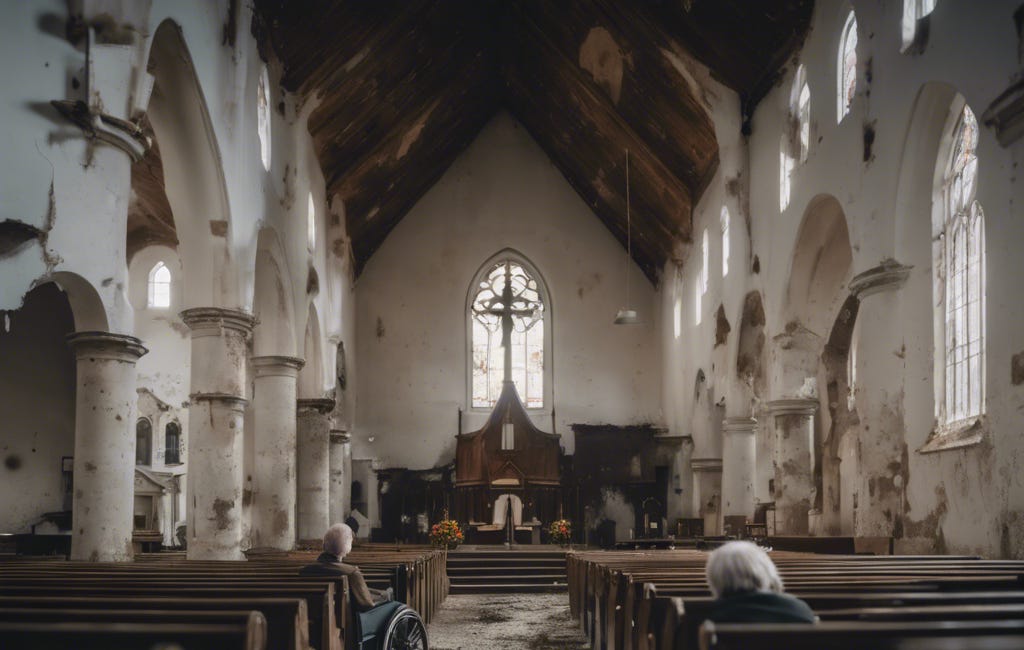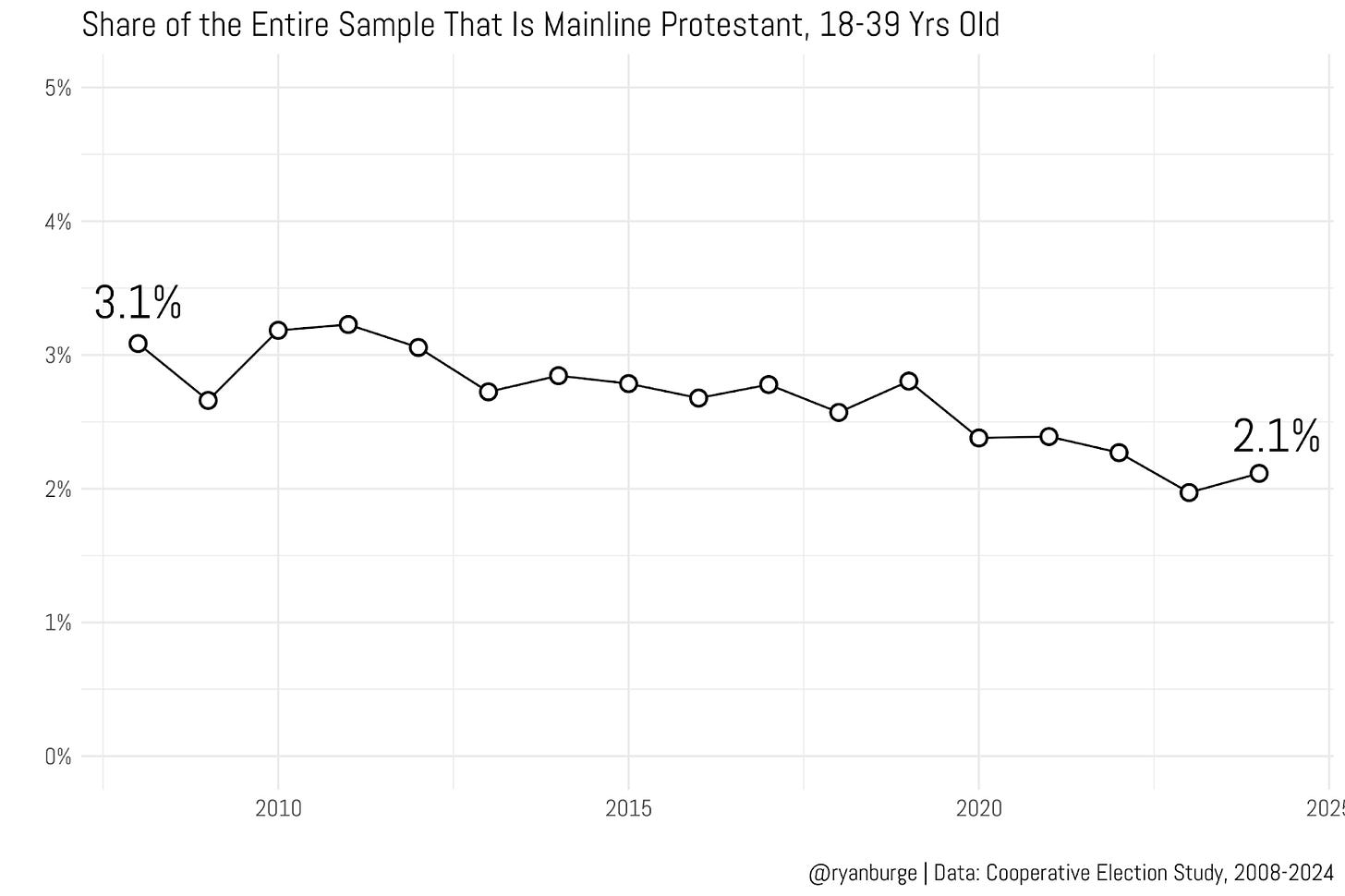The Remnant: Inside the World of Young Mainline Protestants
And they can't really like Trump, right?
A couple of years ago, I wrote an article titled, “Why It's Really Hard to Be Optimistic About the Mainline,” which I’ve referenced frequently since its publication. That’s always a good sign that I need to revisit that topic. One of the main threads in the prior piece was a simple demographic reality of mainline Protestant Christians – they are old. I mean, shockingly old. For instance, according to their own records, 50% of Episcopalians have celebrated their 65th birthday while only 13% had not become adults yet. For the PCUSA it wasn’t a whole lot better - 32% were 70 or older and only 4% were children.
But what really inspired that entire post was a couple comments I got from folks who were asking about the politics and theology of younger mainline Protestants. That seemed like pretty good fodder for this newsletter until I took a quick look at the data. What I found was shocking - less than 2% of the entire sample of the 2022 General Social Survey were mainline Protestants between the ages of 18 and 35. In other words, my sample size was just so small I couldn’t take the analysis much further.
Why It's Really Hard to Be Optimistic About the Mainline
I’ve gotta say - the comments I get on this Substack tend to be really high quality. Which is nice! Nothing is worse than scrolling through my mentions on Twitter and seeing a bunch of ignorant, ill-informed folks spew nonsense just to elicit a response from me (or someone else). Word to the wise - don’t take the bait. Just keep scrolling.
Well, I realized that I do have another data source that I could turn to when trying to help answer this question: the Cooperative Election Study. It’s about 20x the size of the GSS and thus makes it possible to still have a pretty decent sample size even when it’s only a small sliver of the population.
So here’s the size of the entire sample that is both mainline Protestant and less than forty years old. I calculated this for every year of the survey from 2008 through 2024.
I was pretty pleased to see that the estimates from the GSS and the CES are pretty darn similar when making this calculation. In 2008, about 3% of the entire adult population were younger mainline Protestants. That number held relatively steady for the next decade or so. It was 2.9% in 2019, for instance. But in the last couple of years it’s dropped noticeably. In 2023, it was right at 2% and in the most recent data it was 2.1%.
It’s helpful to pause here and just think about what that means in comparison to other religious groups. In the 2024 CES, 2.2% of the population identified as Jewish. Nearly 7% were atheist and 6% were agnostic. In other words, finding a younger mainliner is an incredibly rare thing. The share of Americans who are Catholic in the same age range is about 5.5%.
But it’s not just this statistic that points to a pretty bleak future for the mainline; the same alarming trend appears when I look at the age distribution of the Seven Sisters of the Mainline (the largest denominations in the tradition). One key point to remember – these are just adults. Surveys of children are really difficult to field for a variety of ethical and logistical reasons.




